- Home
- Oliver Sacks
The River of Consciousness Page 2
The River of Consciousness Read online
Page 2
What had once been a pretty picture of insects buzzing about brightly colored flowers now became an essential drama in life, full of biological depth and meaning. The colors and smells of flowers were adapted to insects’ senses. While bees are attracted to blue and yellow flowers, they ignore red ones, because they are red-blind. On the other hand, their ability to see beyond the violet is exploited by flowers which use ultraviolet markings—the honey guides that direct bees to their nectaries. Butterflies, with good red vision, fertilize red flowers but may ignore the blue and violet ones. Flowers pollinated by night-flying moths tend to lack color but to exude their scents at night. And flowers pollinated by flies, which live on decaying matter, may mimic the (to us) foul smells of putrid flesh.
It was not just the evolution of plants but the coevolution of plants and insects that Darwin illuminated for the first time. Thus natural selection would ensure that the mouth parts of insects matched the structure of their preferred flowers—and Darwin took special delight in making predictions here. Examining one Madagascan orchid with a nectary nearly a foot long, he predicted that a moth would be found with a proboscis long enough to probe its depths; decades after his death, such a moth was finally discovered.
The Origin was a frontal assault (delicately presented though it was) on creationism, and while Darwin had been careful to say little in the book about human evolution, the implications of his theory were perfectly clear. It was especially the idea that man could be regarded as a mere animal—an ape—descended from other animals that had provoked outrage and ridicule. But for most people, plants were a different matter—they neither moved nor felt; they inhabited a kingdom of their own, separated from the animal kingdom by a great gulf. The evolution of plants, Darwin sensed, might seem less relevant, or less threatening, than the evolution of animals, and so more accessible to calm and rational consideration. Indeed, he wrote to Asa Gray, “no one else has perceived that my chief interest in my orchid book, has been that it was a ‘flank movement’ on the enemy.” Darwin was never belligerent, like his “bulldog” Huxley, but he knew that there was a battle to wage, and he was not averse to military metaphors.
It is, however, not militancy or polemic that shines out of the orchid book; it is sheer joy, delight in what he was seeing. This delight and exuberance burst out of his letters:
You cannot conceive how the Orchids have delighted me….What wonderful structures!…The beauty of the adaptation of parts seems to me unparalleled….I was almost mad at the wealth of Orchids….One splendid flower of Catasetum, the most wonderful Orchid I have seen….Happy man, he [who] has actually seen crowds of bees flying round Catasetum, with the pollinia sticking to their backs!…I never was more interested in any subject in all my life than in this of Orchids.
The fertilization of flowers engaged Darwin to the end of his life, and the orchid book was followed, nearly fifteen years later, by a more general book, The Effects of Cross and Self Fertilisation in the Vegetable Kingdom.
But plants also have to survive, flourish, and find (or create) niches in the world, if they are ever to reach the point of reproduction. Darwin was equally interested in the devices and adaptations by which plants survived and in their varied and sometimes astonishing lifestyles, which included sense organs and motor powers akin to those of animals.
In 1860, during a summer holiday, Darwin first encountered and became enamored of insect-eating plants, and this started a series of investigations that culminated fifteen years later in the publication of Insectivorous Plants. This volume has an easy, companionable style and starts, like most of his books, with a personal recollection:
I was surprised by finding how large a number of insects were caught by the leaves of the common sun-dew (Drosera rotundifolia) on a heath in Sussex….On one plant all six leaves had caught their prey….Many plants cause the death of insects…without thereby receiving, as far as we can perceive, any advantage; but it was soon evident that Drosera was excellently adapted for the special purpose of catching insects.
The idea of adaptation was always in Darwin’s mind, and one look at the sundew showed him that these were adaptations of an entirely novel kind, for Drosera’s leaves not only had a sticky surface but were covered with delicate filaments (Darwin called them “tentacles”) with glands at their tips. What were these for? he wondered.
“If a small organic or inorganic object be placed on the glands in the centre of a leaf,” he observed,
they transmit a motor impulse to the marginal tentacles….The nearer ones are first affected and slowly bend towards the centre, and then those farther off, until at last all become closely inflected over the object.
But if the object was not nourishing, it was speedily released.
Darwin went on to demonstrate this by putting blobs of egg white on some leaves and similar blobs of inorganic matter on others. The inorganic matter was quickly released, but the egg white was retained and stimulated the formation of a ferment and an acid that soon digested and absorbed it. It was similar with insects, especially live ones. Here, without a mouth, or a gut, or nerves, Drosera efficiently captured its prey and absorbed it, using special digestive enzymes.
Darwin addressed not only how Drosera functioned but why it had adopted so extraordinary a lifestyle: he observed that the plant grew in bogs, in acidic soil that was relatively barren of organic material and assimilable nitrogen. Few plants could survive in such conditions, but Drosera had found a way to claim this niche by absorbing its nitrogen directly from insects rather than from the soil. Amazed by the animal-like coordination of Drosera’s tentacles, which closed on its prey like those of a sea anemone, and by the plant’s animal-like ability to digest, Darwin wrote to Asa Gray, “You are unjust on the merits of my beloved Drosera; it is a wonderful plant, or rather a most sagacious animal. I will stick up for Drosera to the day of my death.”
And he became still more enthusiastic about Drosera when he found that making a small nick in half of a leaf would paralyze just that half, as if a nerve had been cut. The appearance of such a leaf, he wrote, resembled “a man with his backbone broken and lower extremities paralysed.” Darwin later received specimens of the Venus flytrap—a member of the sundew family—which, the moment its trigger-like hairs were touched, would clap its leaves together on an insect and imprison it. The flytrap’s reactions were so fast that Darwin wondered whether electricity could be involved, something analogous to a nerve impulse. He discussed this with his physiologist colleague Burdon Sanderson and was delighted when Sanderson was able to show that electric current was indeed generated by the leaves and could also stimulate them to close. “When the leaves are irritated,” Darwin recounted in Insectivorous Plants, “the current is disturbed in the same manner as takes place during the contraction of the muscle of an animal.”
Plants are often regarded as insensate and immobile—but the insect-eating plants provided a spectacular rebuttal of this notion, and now, eager to examine other aspects of plant motion, Darwin turned to an exploration of climbing plants. (This would culminate in the publication of On the Movements and Habits of Climbing Plants.) Climbing was an efficient adaptation, allowing plants to disburden themselves of rigid supporting tissue by using other plants to support and elevate them. And there was not just one way of climbing but many. There were twining plants, leaf-climbers, and plants that climbed with the use of tendrils. These especially fascinated Darwin—it was almost, he felt, as if they had “eyes” and could “survey” their surroundings for suitable supports. “I believe, Sir, the tendrils can see,” he wrote to J. D. Hooker. How did such complex adaptations arise?
Darwin saw twining plants as ancestral to other climbing plants, and he thought that tendril-bearing plants had evolved from these, and leaf-climbers, in turn, from tendril-bearers, each development opening up more and more possible niches—roles for the organism in its environment. Thus climbing plants had evolved over time—they had not all been created in an instant, by divine fi
at. But how did twining itself start? Darwin had observed twisting movements in the stems, leaves, and roots of every plant he had examined, and such twisting movements (which he called circumnutation) could also be observed in the earliest evolved plants: cycads, ferns, seaweeds, too. When plants grow towards the light, they do not just thrust upwards; they twist, they corkscrew, towards the light. Circumnutation, Darwin came to think, was a universal disposition of plants and the antecedent of all other twisting movements in plants.
These thoughts, along with dozens of beautiful experiments, were set out in his last botanical book, The Power of Movement in Plants, published in 1880. Among the many charming and ingenious experiments he recounted was one in which he planted oat seedlings, shone light on them from different directions, and found that they always bent or twisted towards the light, even when it was too dim to be seen by human eyes. Was there (as he imagined of the tips of tendrils) a photosensitive region, a sort of “eye” at the tips of the seedling leaves? He devised little caps, darkened with India ink, to cover these and found that they no longer responded to light. It was clear, he concluded, that when light fell on the leaf tip, it stimulated the tip to release some sort of messenger which, reaching the “motor” parts of the seedling, caused it to twist towards the light. Similarly, the primary roots (or radicles) of seedlings, which have to negotiate all sorts of obstacles, Darwin found to be extremely sensitive to contact, gravity, pressure, moisture, chemical gradients, etc. He wrote,
There is no structure in plants more wonderful, as far as its functions are concerned, than the tip of the radicle….It is hardly an exaggeration to say that the tip of the radicle…acts like the brain of one of the lower animals…receiving impressions from the sense-organs, and directing the several movements.
But as Janet Browne remarks in her biography of Darwin, The Power of Movement in Plants was “an unexpectedly controversial book.” Darwin’s idea of circumnutation was roundly criticized. He had always acknowledged it as a speculative leap, but a more cutting criticism came from the German botanist Julius Sachs, who, in Browne’s words, “sneered at Darwin’s suggestion that the tip of the root might be compared to the brain of a simple organism and declared that Darwin’s home-based experimental techniques were laughably defective.”
However homely Darwin’s techniques, though, his observations were precise and correct. His ideas of a chemical messenger being transmitted downwards from the sensitive tip of the seedling to its “motor” tissue were to lead the way, fifty years later, to the discovery of plant hormones like auxins, which, in plants, play many of the roles that nervous systems do in animals.
Darwin had been an invalid for forty years, with an enigmatic illness that had assailed him since his return from the Galápagos. He would sometimes spend entire days vomiting or confined to his sofa, and as he grew older, he developed heart problems, too. But his intellectual energy and creativity never wavered. He wrote ten books after the Origin, many of which went through major revisions themselves—to say nothing of dozens of articles and innumerable letters. He continued to pursue his varied interests throughout his life. In 1877 he published a second edition, greatly enlarged and revised, of his orchid book (originally published fifteen years earlier). My friend Eric Korn, an antiquarian and Darwin specialist, told me that he once had a copy of this in which there was slipped the counterfoil of an 1882 postal order for two shillings and nine pence, signed by Darwin himself, in payment for a new orchid specimen. Darwin was to die in April of that year, but he was still in love with orchids and collecting them for study within weeks of his death.
Natural beauty, for Darwin, was not just aesthetic; it always reflected function and adaptation at work. Orchids were not just ornamental, to be displayed in a garden or a bouquet; they were wonderful contrivances, examples of nature’s imagination, natural selection, at work. Flowers required no Creator, but were wholly intelligible as products of accident and selection, of tiny incremental changes extending over hundreds of millions of years. This, for Darwin, was the meaning of flowers, the meaning of all adaptations, plant and animal, the meaning of natural selection.
It is often felt that Darwin, more than anyone, banished “meaning” from the world—in the sense of any overall divine meaning or purpose. There is indeed no design, no plan, no blueprint in Darwin’s world; natural selection has no direction or aim, nor any goal to which it strives. Darwinism, it is often said, spelled the end of teleological thinking. And yet, his son Francis writes,
one of the greatest services rendered by my father to the study of Natural History is the revival of Teleology. The evolutionist studies the purpose or meaning of organs with the zeal of the older Teleologist, but with far wider and more coherent purpose. He has the invigorating knowledge that he is gaining not isolated conceptions of the economy of the present, but a coherent view of both past and present. And even where he fails to discover the use of any part, he may, by a knowledge of its structure, unravel the history of the past vicissitudes in the life of the species. In this way a vigour and unity is given to the study of the forms of organised beings, which before it lacked.
And this, Francis suggests, was “effected almost as much by Darwin’s special botanical work as by the Origin of Species.”
By asking why, by seeking meaning (not in any final sense, but in the immediate sense of use or purpose), Darwin found in his botanical work the strongest evidence for evolution and natural selection. And in doing so, he transformed botany itself from a purely descriptive discipline into an evolutionary science. Botany, indeed, was the first evolutionary science, and Darwin’s botanical work was to lead the way to all the other evolutionary sciences—and to the insight, as Theodosius Dobzhansky put it, that “nothing in biology makes sense except in the light of evolution.”
Darwin spoke of the Origin as “one long argument.” His botanical books, by contrast, were more personal and lyrical, less systematic in form, and they secured their effects by demonstration, not argument. According to Francis Darwin, Asa Gray observed that if the orchid book “had appeared before the Origin, the author would have been canonized rather than anathematized by the natural theologians.”
Linus Pauling has said that he read the Origin before he was nine. I was not that precocious and could not have followed its “one long argument” at that age. But I had an intimation of Darwin’s vision of the world in our own garden—a garden which, on summer days, was full of flowers and bees buzzing from one flower to another. It was my mother, botanically inclined, who explained to me what the bees were doing, their legs yellow with pollen, and how they and the flowers depended on each other.
While most of the flowers in the garden had rich scents and colors, we also had two magnolia trees, with huge but pale and scentless flowers. The magnolia flowers, when ripe, would be crawling with tiny insects, little beetles. Magnolias, my mother explained, were among the most ancient of flowering plants and had appeared nearly a hundred million years ago, at a time when “modern” insects like bees had not yet evolved, so they had to rely on a more ancient insect, a beetle, for pollination. Bees and butterflies, flowers with colors and scents, were not preordained, waiting in the wings—and they might never have appeared. They would develop together, in infinitesimal stages, over millions of years. The idea of a world without bees or butterflies, without scent or color, affected me with a sense of awe.
The notion of such vast eons of time—and the power of tiny, undirected changes which by their accumulation could generate new worlds, worlds of enormous richness and variety—was intoxicating. Evolutionary theory provided, for many of us, a sense of deep meaning and satisfaction that belief in a divine plan had never achieved. The world that presented itself to us became a transparent surface, through which one could see the whole history of life. The idea that it could have worked out differently, that dinosaurs might still be roaming the earth or that human beings might never have evolved, was a dizzying one. It made life seem all the more precio
us and a wonderful, ongoing adventure (“a glorious accident,” as Stephen Jay Gould called it)—not fixed or predetermined, but always susceptible to change and new experience.
Life on our planet is several billion years old, and we literally embody this deep history in our structures, our behaviors, our instincts, our genes. We humans retain, for example, the remnants of gill arches, much modified, from our fishy ancestors and even the neural systems that once controlled gill movement. As Darwin wrote in The Descent of Man, “Man still bears in his bodily frame the indelible stamp of his lowly origin.” We bear, too, an even older past; we are made of cells, and cells go back to the very origin of life.
In 1837, in the first of many notebooks he was to keep on “the species problem,” Darwin sketched a tree of life. Its brachiating shape, so archetypal and potent, reflected the balance of evolution and extinction. Darwin always stressed the continuity of life, how all living things are descended from a common ancestor, and how we are in this sense all related to each other. So humans are related not only to apes and other animals but to plants too. (Plants and animals, we know now, share 70 percent of their DNA.) And yet, because of that great engine of natural selection—variation—every species is unique and each individual is unique, too.

 Uncle Tungsten
Uncle Tungsten Oaxaca Journal
Oaxaca Journal Musicophilia
Musicophilia The man who mistook his wife for a hat
The man who mistook his wife for a hat 1989 - Seeing Voices
1989 - Seeing Voices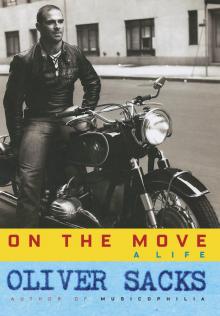 On the Move: A Life
On the Move: A Life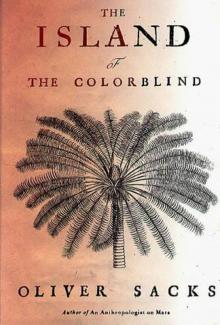 1996 - The Island of the Colorblind
1996 - The Island of the Colorblind An Anthropologist on Mars: Seven Paradoxical Tales
An Anthropologist on Mars: Seven Paradoxical Tales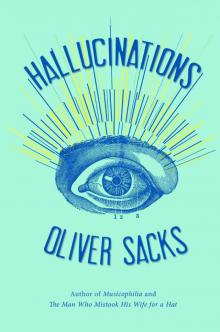 Hallucinations
Hallucinations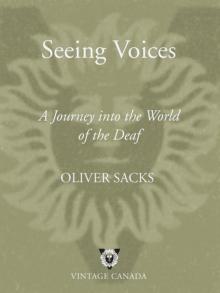 Seeing Voices
Seeing Voices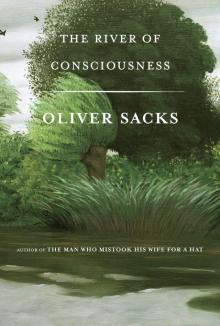 The River of Consciousness
The River of Consciousness Vintage Sacks
Vintage Sacks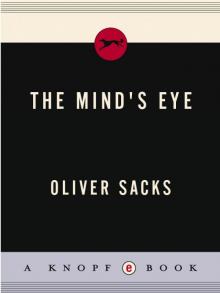 The Mind's Eye
The Mind's Eye Everything in Its Place
Everything in Its Place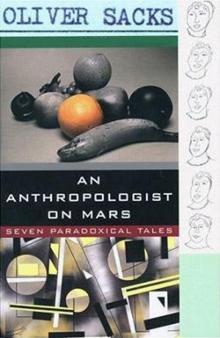 An Anthropologist on Mars (1995)
An Anthropologist on Mars (1995) Uncle Tungsten: Memories of a Chemical Boyhood (2001)
Uncle Tungsten: Memories of a Chemical Boyhood (2001)